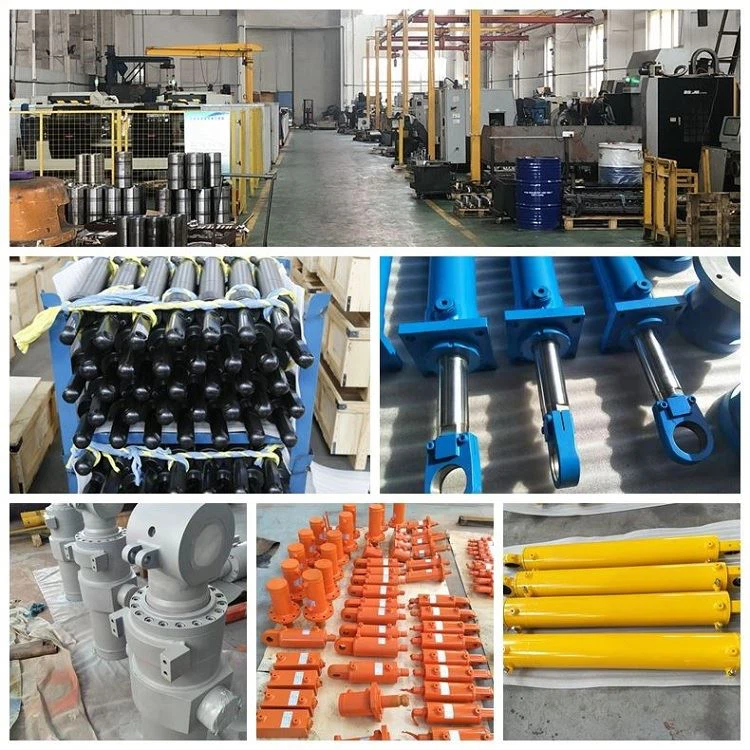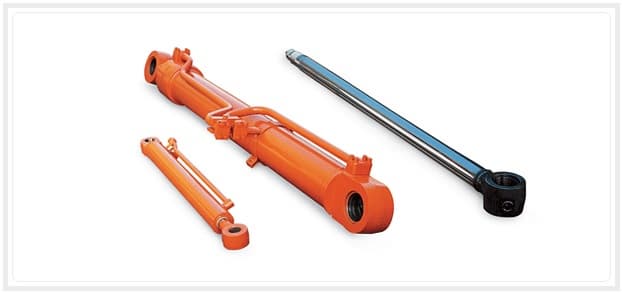Product Description
For CAT E307D/308d E307e/308e E312b/311c E312b/E312c E312D/313D E313D2 E315D E318 Small Arm/Bucket/Boom Excavator Hydraulic oil Cylinder
Part number system
PRODUCT DISPLAY
COMPANY INFORMATION
PRODUCTION PROCESS
OTHER PRODUCTS
FAQ
| Certification: | ISO9001 |
|---|---|
| Pressure: | High Pressure |
| Work Temperature: | Normal Temperature |
| Samples: |
US$ 439/Piece
1 Piece(Min.Order) | Order Sample |
|---|
| Customization: |
Available
|
|
|---|
.shipping-cost-tm .tm-status-off{background: none;padding:0;color: #1470cc}
|
Shipping Cost:
Estimated freight per unit. |
about shipping cost and estimated delivery time. |
|---|
| Payment Method: |
|
|---|---|
|
Initial Payment Full Payment |
| Currency: | US$ |
|---|
| Return&refunds: | You can apply for a refund up to 30 days after receipt of the products. |
|---|

How does a boom cylinder handle variations in load capacity and weight?
A boom cylinder is designed to handle variations in load capacity and weight in heavy machinery. Here’s a detailed explanation:
When a machinery equipped with a boom cylinder is used for different tasks, the load capacity and weight requirements may vary. The boom cylinder is designed to accommodate these variations and ensure optimal performance. Here are the key factors that contribute to how a boom cylinder handles load capacity and weight variations:
- Force Generation: The boom cylinder generates the necessary force to move the boom, arm, or attachment of the machinery. The force generated by the cylinder can be adjusted based on the load capacity and weight requirements. By controlling the hydraulic pressure and flow rate, the operator can regulate the force exerted by the cylinder, allowing it to handle both lighter and heavier loads.
- Adjustable Stroke Length: Boom cylinders often have an adjustable stroke length, which is the distance the piston can travel within the cylinder. By adjusting the stroke length, the cylinder can adapt to different load capacities and weight distributions. For heavier loads, a longer stroke may be required to provide the necessary extension or retraction of the boom. Conversely, for lighter loads, a shorter stroke may be sufficient, optimizing the cylinder’s efficiency.
- Pressure Compensation: Some boom cylinders are equipped with pressure compensation mechanisms. These mechanisms automatically adjust the hydraulic pressure within the cylinder to compensate for variations in load capacity and weight. For example, as the load on the boom increases, the pressure compensation mechanism increases the hydraulic pressure, ensuring consistent force and control throughout the operation.
- Integration with Load Sensing Systems: Boom cylinders can be integrated with load sensing systems that provide real-time feedback on the load capacity and weight. Load sensing systems use sensors to measure the force exerted on the boom or attachment and transmit this information to the hydraulic control system. The hydraulic control system can then adjust the pressure and flow rate to match the load requirements, optimizing the cylinder’s performance.
- Multi-Stage Cylinders: In some cases, machinery may be equipped with multi-stage boom cylinders. These cylinders have multiple sections or stages that can be extended or retracted independently. Each stage may have different dimensions and force capabilities. By adjusting the extension or retraction of each stage, the cylinder can adapt to varying load capacities and weight distributions, providing precise control and handling.
By incorporating these design features and mechanisms, a boom cylinder can effectively handle variations in load capacity and weight. This allows the machinery to perform a wide range of tasks with different load requirements, providing versatility and efficiency in industries such as construction, mining, material handling, and more.

Can boom cylinders be used in forestry equipment for tree handling?
Yes, boom cylinders can be used in forestry equipment for tree handling. Here’s a detailed explanation:
Forestry equipment is specifically designed for various tasks related to the harvesting, processing, and transportation of trees and timber. Boom cylinders play a crucial role in tree handling within forestry equipment. Here’s how boom cylinders are utilized in this context:
- Tree Felling: Boom cylinders are used in tree felling equipment, such as feller-bunchers or harvesters. They provide the necessary hydraulic force to control the cutting head or cutting arm, allowing operators to fell trees with precision and control. Boom cylinders enable smooth and controlled movement during the tree felling process.
- Tree Loading and Unloading: In forestry equipment used for log loading and unloading, such as log loaders or skidders, boom cylinders are employed to handle the trees. They enable the lifting, lowering, and positioning of logs or tree stems for loading onto trucks or transporting within the logging site. Boom cylinders provide the necessary force and controlled movement for efficient tree handling.
- Tree Processing: Forestry equipment used for tree processing, such as delimbers or debarkers, utilize boom cylinders to manipulate the trees during the processing operations. Boom cylinders facilitate the controlled movement, positioning, and rotation of the trees, allowing for efficient and precise processing.
- Attachment Control: Boom cylinders are also used to control various attachments in forestry equipment. For example, grapples or clamps used for tree handling can be actuated by boom cylinders. This enables secure gripping, lifting, and manipulation of trees, enhancing the efficiency and safety of tree handling operations.
The use of boom cylinders in forestry equipment for tree handling offers several benefits:
- Precise Control: Boom cylinders provide operators with precise control over the movement and positioning of trees. This precision allows for accurate felling, loading, unloading, and processing of trees, minimizing waste and optimizing productivity.
- Efficient Tree Handling: Boom cylinders enable efficient tree handling by providing the necessary force to lift and manipulate trees of various sizes and weights. The controlled movement and positioning facilitated by boom cylinders streamline the workflow and reduce manual effort, improving overall productivity.
- Operator Safety: Boom cylinders contribute to operator safety during tree handling operations. The controlled movement and stability provided by boom cylinders minimize the risk of accidents or injuries caused by uncontrolled tree movement or sudden shifts in load.
- Adaptability: Boom cylinders can be customized to match the specific requirements of different forestry equipment and tree handling tasks. This adaptability allows for versatility in tree handling, accommodating various tree species, sizes, and terrain conditions.
Overall, boom cylinders are valuable components in forestry equipment for tree handling. They enable precise control, efficient tree manipulation, operator safety, and adaptability to various tree handling tasks in the forestry industry.
It’s important to consult the equipment manufacturer’s guidelines and recommendations to ensure the proper selection, installation, and maintenance of boom cylinders in forestry equipment.

Can you explain the role of hydraulic fluid in a boom cylinder?
Hydraulic fluid plays a crucial role in the operation of a boom cylinder in heavy machinery. Here’s a detailed explanation of its role:
- Transmission of Power: Hydraulic fluid is the medium through which power is transmitted in a boom cylinder. When hydraulic fluid is supplied under pressure to one side of the cylinder, it exerts force on the piston, causing it to move. This movement is then transferred to the boom, enabling its extension, retraction, lifting, or lowering. The ability of hydraulic fluid to transmit power efficiently allows for smooth and controlled operation of the boom cylinder.
- Force Generation: Hydraulic fluid is responsible for generating the force required to move the boom. The pressure applied to the hydraulic fluid creates a force that acts on the piston, creating a pushing or pulling action. This force is then transmitted to the boom through the piston and rod, allowing for the desired movement. The force generated by the hydraulic fluid depends on the pressure applied and the effective area of the piston.
- Control of Movement: Hydraulic fluid enables precise control of the boom cylinder’s movement. By regulating the flow and pressure of the hydraulic fluid, operators can control the speed, direction, and extent of the boom’s extension, retraction, lifting, or lowering. This control allows for accurate positioning of the boom, precise load handling, and safe operation of the heavy machinery.
- Heat Dissipation: Hydraulic fluid also plays a role in dissipating heat generated during the operation of the boom cylinder. As hydraulic fluid flows through the system, it absorbs heat from the hydraulic components and transfers it to the reservoir or other heat dissipation mechanisms. Adequate heat dissipation prevents the hydraulic fluid from overheating, which could lead to a loss of performance or damage to the components.
- Lubrication and Seal Protection: Hydraulic fluid provides lubrication to the moving components within the boom cylinder, such as the piston, rod, and seals. This lubrication minimizes friction and wear, ensuring smooth and efficient operation of the cylinder. Additionally, hydraulic fluid helps protect the seals from drying out or being damaged by contaminants, maintaining the integrity of the cylinder and preventing fluid leakage.
- System Stability and Safety: The proper selection and maintenance of hydraulic fluid contribute to the stability and safety of the boom cylinder system. Using the recommended hydraulic fluid with the appropriate viscosity and additives ensures optimal performance and protects the system from wear, corrosion, and fluid breakdown. Regular monitoring and maintenance of the hydraulic fluid help identify potential issues, such as contamination or degradation, and prevent system failures or malfunctions.
In summary, hydraulic fluid plays a vital role in a boom cylinder by transmitting power, generating force, controlling movement, dissipating heat, providing lubrication and seal protection, and contributing to system stability and safety. Its properties and effective utilization are essential for the efficient and reliable operation of the boom cylinder in heavy machinery.


editor by CX 2023-12-02